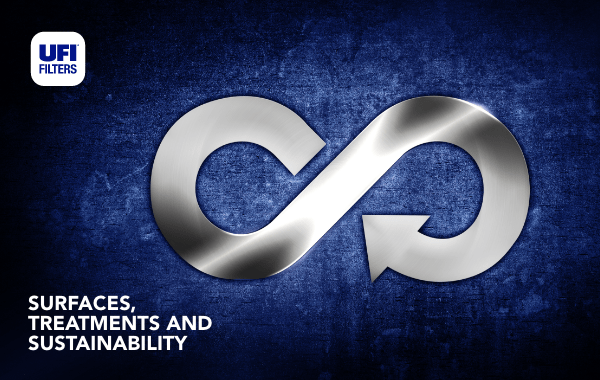
In recent months we have been studying the various types of treatments used in the hydraulics sector to protect metal surfaces, which form the interface between the component and its environment.
Particular attention has always been paid to the surfaces, processes and treatments used to optimize performance and prevent corrosion, which leads to the progressive deterioration of components and ultimately to the replacement of damaged components.
Over the years, many coating processes have been developed to prevent corrosion. These include metallic coatings, inorganic coatings and paints, which are all designed to ensure that direct metal-to-metal contact is avoided.
However, with new regulations and an increasing focus on the sustainability of materials, these treatments and processes are increasingly being analysed and re-evaluated from an environmental perspective.
Coatings used to prevent the corrosion of materials can sometimes prevent the materials from being recycled; moreover, some treatments require significant energy consumption and lead to high CO2 emissions.
A greater focus on materials and treatments for an increasingly circular economy
In the coming years, surface treatment and protection processes will therefore play an ever more important role in component life extension, as well as in manufacturing, remanufacturing and repair activities, for increasingly sustainable growth and a more circular economy.
For the reasons outlined above, it will also be increasingly necessary to rethink the processes and operations currently used for surface treatment.
In this context, only support and collaboration with experienced partners will make it possible to accurately assess the details of each application and the potential problems that may arise from the use of one treatment over another.
It is becoming increasingly important to seek to optimize the performance and lower the environmental impact of a product, both in the production phase and in the disposal phase at the end of the product’s life.
In fact, the technical departments and designers of the various components of hydraulic systems, including the filters, have already begun to take this into account during the design phase; in this way, the design can be oriented towards circular and efficient solutions with lower environmental impacts.
For some years now, UFI Filters Hydraulics has also been adapting its design guidelines in this direction, replacing some surface treatments with processes that have lower environmental impacts.
UFI Filters Hydraulics’ designers are also working on increasingly innovative filtration solutions with lower environmental impacts, such as coreless filter elements, which can be completely incinerated once they are exhausted.
Sustainability report and materiality impact
UFI Filters Hydraulics can also benefit from synergies with the UFI Filters Group.
Specifically, during the research and development of new processes and materials, synergies arise owing to the shared use of laboratories and research centres dedicated to new technologies and the exchange of specific know-how in the automotive sector, which has been sensitive to recyclability and sustainability issues for years.
The UFI Group has also devoted considerable space to this issue in its second Sustainability Report, published last month, in the section dedicated to MATERIALITY IMPACT.
For more information and details of our ongoing activities in this area, please see our Sustainability Report.
For advice on identifying the lowest-impact filtration solution for your specific application, please contact our sales team.